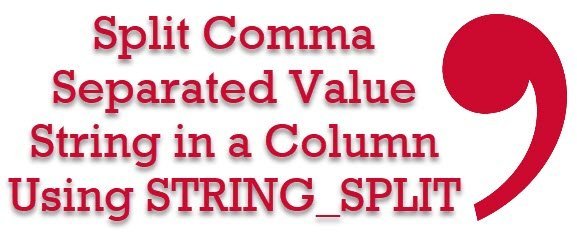What I love most about this blog is active readers participation. If readers are becoming contributor is the true success for any blog or online community. Recently many readers have contributed their suggestions and script to this blog.
Joffery has provided nice script which is modification to previous article of SQL SERVER – 2005 – Find Tables With Foreign Key Constraint in Database.
Following note is from Joffery:
Hi Pinal
Very interesting article and of great help.
I made a little addition to your code. As I wanted also to know what the FKs are doing in the Table (referential integrity on update and on delete) I added two columns to your superb query. And a little bit of ordering :)
Maybe it helps other readers.
USE AdventureWorks GO SELECT f.name AS ForeignKey, OBJECT_NAME(f.parent_object_id) AS TableName, COL_NAME(fc.parent_object_id, fc.parent_column_id) AS ColumnName, OBJECT_NAME (f.referenced_object_id) AS ReferenceTableName, COL_NAME(fc.referenced_object_id, fc.referenced_column_id) AS ReferenceColumnName, f.update_referential_action_desc AS UpdateAction, f.delete_referential_action_desc AS DeleteAction FROM sys.foreign_keys AS f INNER JOIN sys.foreign_key_columns AS fc ON f.OBJECT_ID = fc.constraint_object_id ORDER BY TableName ASC, ColumnName ASC
Reference : Pinal Dave (https://blog.sqlauthority.com), Joffery






7 Comments. Leave new
thanks a lot, you saved me so much time!
Pinal,
This article was a great help to me.
I was wondering if you could add schema columns to the result set?
Thanks again..
Bob
Bob Shultz:
Schema Names added below
USE AdventureWorks
GO
SELECT
f.name AS ForeignKey,
SCHEMA_NAME(o.schema_id) AS SchemaName,
OBJECT_NAME(f.parent_object_id) AS TableName,
COL_NAME(fc.parent_object_id,fc.parent_column_id) AS ColumnName,
OBJECT_NAME (f.referenced_object_id) AS ReferenceTableName,
COL_NAME(fc.referenced_object_id,fc.referenced_column_id) AS ReferenceColumnName,
f.update_referential_action_desc AS UpdateAction,
f.delete_referential_action_desc AS DeleteAction
FROM sys.foreign_keys AS f
JOIN sys.foreign_key_columns AS fc
ON f.OBJECT_ID = fc.constraint_object_id
JOIN sys.objects o
ON f.parent_object_id = o.object_id
ORDER BY
SchemaName ASC,
TableName ASC,
ColumnName ASC
U really saved me lot of time.
But How can i Truncate my Database(or All Tables From Dataabase)
I am new to this but I gave it a try anyway.
I checked whether it was possible to truncate all tables of a database by using a cursor. However, since in most cases there are constraints between the tables, the cursor won’t be able to work.
DECLARE @table varchar(150)
DECLARE db_console CURSOR FOR
select distinct TABLE_SCHEMA + ‘.’ + TABLE_NAME from INFORMATION_SCHEMA.COLUMNS
OPEN db_console
fetch next from db_console into @table
while @@fetch_status = 0
begin
use AdventureWorks
exec(‘truncate table ‘ + @table)
–print @db + ‘.’ + ‘.’ + @schema + ‘.’ + @table + ‘truncated’
fetch next from db_console into @table
end
close db_console
deallocate db_console
You might as well say that this cursor is useless and in the same is a waste of time due to the fact that there is a stored procedure that can do that for us.
According to a response from kristof (stackoverflow), I was able to track the following:
— disable all constraints
EXEC sp_msforeachtable “ALTER TABLE ? NOCHECK CONSTRAINT all”
— delete data in all tables
EXEC sp_MSForEachTable “DELETE FROM ?”
— enable all constraints
exec sp_msforeachtable “ALTER TABLE ? WITH CHECK CHECK CONSTRAINT all”
— reseed tables
EXEC sp_MSforeachtable “DBCC CHECKIDENT ( ‘?’, RESEED, 0)”
Refer this method for accuracy